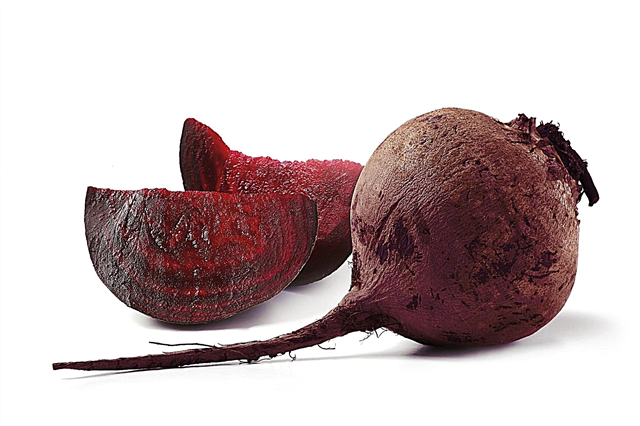
If a child has a fistula on the gum, this cannot go unnoticed by the parents. There may be several reasons for this formation, but in any case, you should not hesitate to see a doctor, since a fistula can cause serious complications.

Causes
A fistula is a canal inside a child's gum, which forms as a result of purulent inflammation. Through this channel, pus, which has collected inside the inflamed gums, comes out. The following pathologies lead to the formation of a fistula:
- Periodontitis... This is one of the complications observed in a child with untimely detected and cured caries. Due to the anatomical structure of the jaw, with this pathology, a bright red connective tissue, called granulation tissue, grows. It destroys healthy cells and, when exposed to some external factors (hypothermia, viral infection, overwork), provokes the formation of a fistula.
- Osteomyelitis... If this infection affects the jaw bones, then, due to weak immunity, it quickly spreads upward with the formation of a fistula.
- Cyst. Such a formation can appear in the gums of a child in the process of teething, due to untimely dental treatment, as well as in violation of their normal development, for example, when milk teeth fell out prematurely or the child has rickets. If an infection gets inside the cyst, it becomes inflamed and a fistula appears as a result.
- Sinusitis... If the disease develops in the maxillary sinuses and dental disease became its cause, sinusitis can be complicated by the appearance of a fistula. In this case, the child will have other ENT symptoms, for example, a stuffy nose and a deterioration in smell.
- Injury... If a child damages the gums during a fall, eating solid food or with a sharp object, then when bacteria enter the wound, purulent inflammation begins, which results in a fistula.

Most often, a fistula on the gum of a baby tooth occurs as a result of advanced caries. The first stages of the disease often pass unnoticed, since they are represented only by white spots or caries can develop between the teeth. Due to the insufficiently strong enamel and the nutritional characteristics of children, caries in childhood spreads rather quickly.
If a child complains of pain, then the infection has already entered the pulp, which threatens with purulent inflammation of the roots. Bacteria and their toxins cause inflammation with the formation of pus. When pus collects near the root, it tries to find a way out through the gum tissue, which is manifested by the appearance of an abscess on the gum. If you do not go to the doctor with the baby in time, who will open such an abscess and treat it, the pus breaks out on its own in the form of a fistula.
In addition, a medical error can lead to the appearance of purulent inflammation in a tooth infected with caries if the dentist, during treatment, did not clean the tooth from infected tissues with sufficient quality or accidentally perforated the root. After closing such a tooth with a temporary or permanent filling, bacteria continue to develop inside, due to which inflammation begins with the formation of pus and the formation of a purulent lump on the gum, and then a fistula.
What does it look like
A fistula can form on the gums of a child of any age - both in the first years of life and at 5 years of age or at school age. It is a small bump from which pus or blood is released (especially if you press on the affected area). Around it, the mucous gums are usually reddened and swollen.
You can learn more about what a fistula is by watching the following video.
Other symptoms
Parents can notice the fistula itself on the outside or on the inside of the gum with the naked eye, but the child will also have the following symptoms of its formation:
- Pain when the child touches the fistula area or food gets into it.
- Increased tooth mobility.
- Bad breath.
- Increased body temperature (not in all cases).
Possible complications
When a child develops a fistula, as a rule, the symptoms preceding its appearance (fever, feeling of fullness, pain) decrease. But this does not mean at all that the disease can be left unattended and wait for the fistula to close itself. If it is not treated, the following problems are possible:
- Pus can get into the tonsils with saliva and cause chronic inflammation.
- The ingress of pus into the gastrointestinal tract can also cause inflammation in the intestines.
- Due to the granulations that make up the walls of the fistula, the soft tissues next to them can collapse, resulting in purulent sinusitis or a hole in the cheek.
- The bacteria can spread into the jaw bones and cause flux.

What to do
Since a fistula is one of the symptoms of an inflammatory process in the oral cavity, it is very important to immediately show the baby to a specialist as soon as he is seen in the child's mouth. The doctor must exclude a wen or cyst in the gum, and also clarify how common the inflammation is, so the child is often sent for an X-ray examination. Only after that will the dentist decide how to treat the fistula on the gum.
Treatment
Depending on the cause of the fistula in the child, medication, therapeutic and surgical treatment can be used.
- If a fistula is formed as a result of purulent inflammation of the root of a milk tooth, as a rule, the tooth is removed, even if the child is only 6 years old or 7 years old and the physiological change of this tooth will not happen soon. This helps prevent infection of the permanent tooth bud.
- When a fistula is formed due to a medical error or with inflammation of the root of a permanent tooth, the opening of the canals and the removal of pus, as well as all dead tissues, are shown. Next, the dentist will disinfect and close the tooth with a temporary filling. On the next visit, the doctor will assess whether new foci of infection have appeared, after which he will install a permanent filling on the tooth.

Among the medicines prescribed for fistula, there are:
- Antibacterial drugs.
- Antihistamines.
- Anti-inflammatory ointments or gels.
- Antiseptics for rinsing.
Treatment must certainly include rehabilitation measures aimed at preventing recurrence of the fistula. They consist in the local use of a laser, ultrasound or diathermoagulation, as a result of which the fistula is painlessly cauterized. Rinsing and irrigation are also used to restore.
In the course of treatment, the child must follow all the doctor's recommendations. The diet during the period of therapy and recovery should be gentle, therefore it includes unsalted, non-spicy mashed food that will not irritate the diseased gum area. It is allowed to take it 3 times a day, and after each intake, the child must rinse his mouth.
Traditional methods
Traditional medicine is used as an additional treatment and must be agreed with the doctor. They are aimed at reducing inflammation as well as disinfecting the oral cavity and speeding up healing. Such means cannot replace treatment at the dentist.
The most common and effective recipes are:
- A glass of warm water, to which you need to add a teaspoon of baking soda and 1 drop of iodine.
- A mixture of strawberry leaves and calendula flowers (10 g each), brew in 200 ml of water.
- St. John's wort herb poured in 100 ml of boiling water, taken in an amount of 10 g.
- 10 g of oak bark, chamomile flowers and sage leaves, brew 100 ml of boiling water.
- Brew 200 ml of boiling water with 50 g of chamomile flowers.

The prepared products can be used for rinsing, and if the child has not yet learned how to perform such a procedure, then make applications with a cotton swab or irrigation. You can also grind these herbs in a coffee grinder, mix with sea buckthorn oil and apply such an ointment to the sore spot.
Prevention
In order to prevent the appearance of a fistula in the child's gums, it is important:
- Pay attention to hygiene procedures that cleanse the oral cavity.
- Treat all dental pathologies on time.
- See your doctor regularly for check-ups.
- Immediately show the child to the dentist if a purulent lump appears on his gum.




